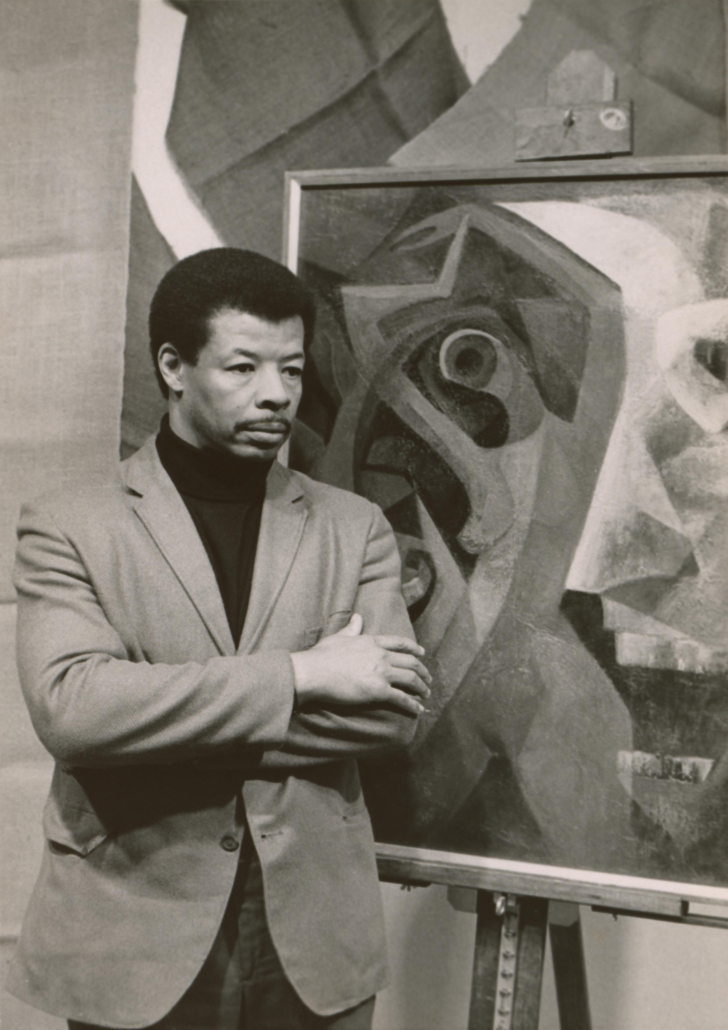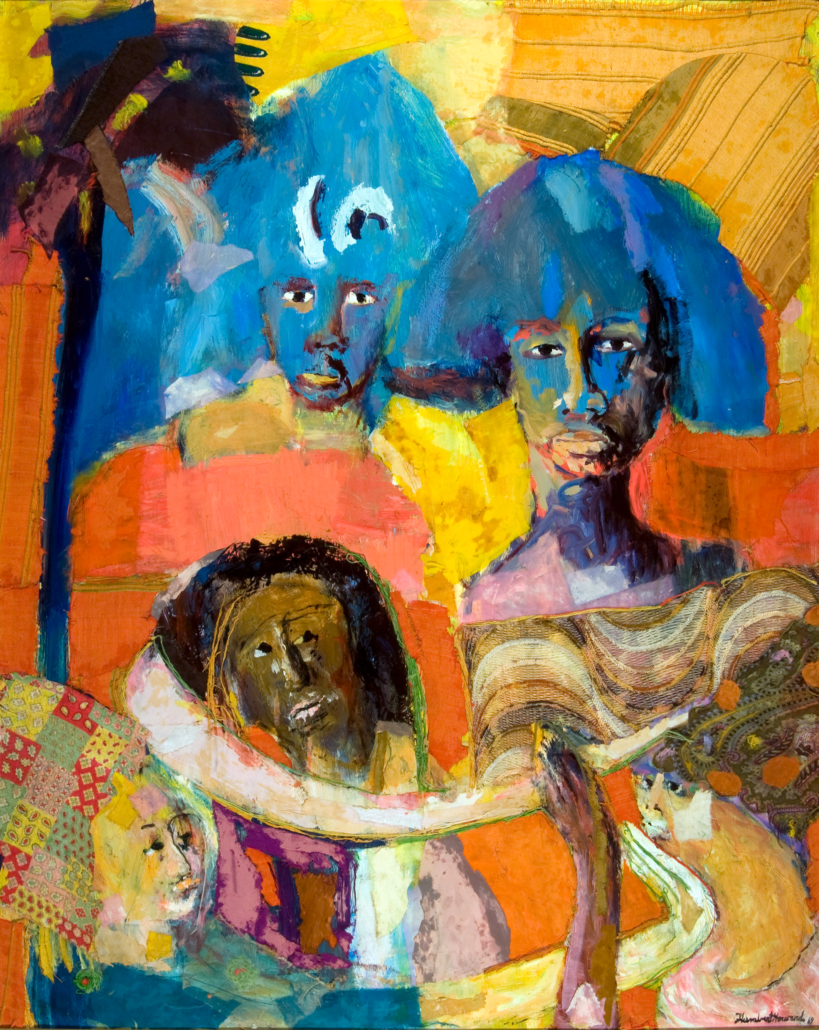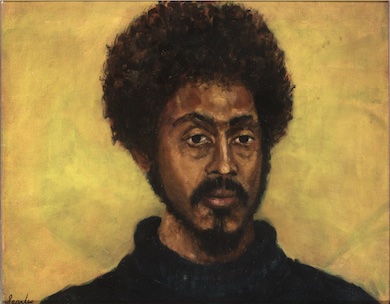
WILMINGTON, De. (AP) – It was 1968 and Wilmington was recovering. The National Guard had occupied Delaware’s largest city for nine months in the wake of Martin Luther King Jr.’s assassination, and the trauma from both of these events left the Black community reeling, marking a moment in Wilmington’s history that city residents still recall today. Percy Ricks, an artist and longtime educator, however, had something he thought people needed to see. A momentous exhibition composed of drawings, paintings, prints and photographs created by 66 Black artists.
Ricks, a Washington, DC., native, previously served as a combat artist in World War II and became the first Black art instructor in Wilmington’s public schools – eventually becoming a driving force behind the city’s art scene.
Ricks would go on to found the Wilmington arts and humanities collective Aesthetic Dynamics Inc., which aimed to highlight Black artists and their contributions to the arts. Still, the organization’s inaugural exhibition struggled to find a home as Black artists were shut out of institutions and segregation persisted across Delaware.
In the 50 years since Ricks premiered this exhibition in Wilmington – eventually finding a home for it at the Wilmington Armory – the collection has largely been forgotten and overlooked by historians and institutions despite its significance in Wilmington following two flashpoint moments in history.
Now, the Delaware Art Museum – which at the time overlooked requests to stage the exhibition within its walls – is reprising the exhibition in an effort to reconcile its initial disregard and to illustrate the cultural legacy that Ricks left behind.
“One way to get people to begin to acknowledge the treasure that African Americans have was to expose them to it,” said James Newton, professor emeritus of Africana Studies at the University of Delaware, “and Percy Ricks was the vehicle for that.”

“TURBULENT TIMES”
In 1968, the National Guard began its nearly yearlong occupation of Wilmington after rioting and unrest flooded the city following King’s death. National Guardsmen focused primarily on West Center City, a mostly Black community.
The presence became the longest occupation of an American city since King’s assassination.
The 1971 exhibition served as a reaction to the traumatic events and an effort to connect the community to emerging Black artists and their work. In the process of organizing the event, Ricks sent a letter to the Delaware Art Museum asking for the institution to host the upcoming exhibition.
No reply was received.
In the years that followed, Ricks was critical of the museum and its exclusion of Black artists and work. Ricks felt that Black artists were not recognized or appreciated by the arts community and were mostly neglected as a result of segregation, Newton said.
“Delaware Art Museum, which had rejected him, today can look at it and say that the fence was broken and that there was a need to have it mended,” said Newton, the UD professor.
Ricks instead showcased the exhibition at the Wilmington Armory, where the National Guard had been housed during the occupation a few years prior. The venue and the exhibition were meant to create an inclusive space where Black artists and attendees could celebrate the art, given that segregation was still prevalent at the time.
The armory and its significance became symbolic in the face of the exhibition that was put on inside, according to Newton.
“Here we have an outstanding African-American art show being shown in the community and at the same time, those men had been probably organized and set out to occupy Wilmington a few years earlier,” Newton said.
The exhibition drew about 7,000 people during its initial run in 1971.
Ricks continued staging exhibitions after the inaugural 1971 show and became a monumental figure in the Delaware art scene in the years that followed.
In 2001, then-Senator Joe Biden wrote him a letter to express his support for his work and Aesthetic Dynamics.
“The arts as a tool for social change is not a new concept, but it is seldom shown so clearly as it is through your life’s work,” the letter reads. “One can not talk about the arts in Wilmington without mentioning Percy Ricks and that speaks volume about your impact and contribution to the arts in Delaware.”
A VISION REALIZED
A half-century after the premier, the reprised exhibition titled Afro-American Images 1971: The Vision of Percy Ricks represents a completion of Ricks’ vision and a moment of reconciliation between the community and the museum, according to Newton, who described Ricks as a longtime mentor.
Margaret Winslow, curator of contemporary art at the Delaware Art Museum, described the renewed exhibition as “incredibly important,” in part to ensure that its significance and art are thoroughly documented in art history and the public archives.

“Most of all, celebrating the legacy of Percy Ricks, the influence he has had on arts and culture in Wilmington, but more broadly as well, and the influence of this important exhibition,” she said.
“My hope is that it encourages others to think about those individuals who should be supported and the platforms that they need, and should have, to support their creativity.”
For Arnold Hurtt, vice president and organization officer of Aesthetic Dynamics Inc., the reprised exhibition still represents what it showcased in 1971 – a platform for current Black artists and inspiration for future ones.
“We are taking steps to preserve the heritage, to preserve our spiritual life for people, especially for those who rarely get those chances to be seen,” Hurtt said. “There’s always a new horizon out there for someone to discover and we hope that this whole exhibition is something for somebody else to discover.”
Hurtt hopes the exhibition allows for children to see themselves in the art and to embolden them to create their own art in the future.
“If you don’t see it, you won’t know that the flowers are growing in your backyard because you don’t go back there,” he said. “This is the beginning to open doors for the future, for other artists.”
By JOSE IGNACIO CASTANEDA PEREZ, Delaware News Journal
Copyright 2021 Associated Press. All rights reserved. This information may not be published, broadcast, rewritten, or redistributed.


